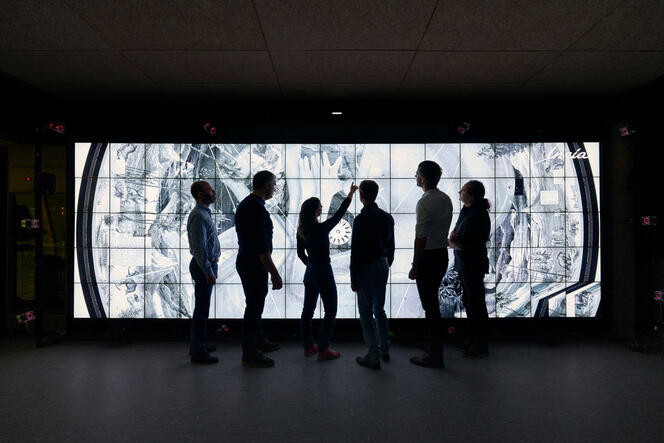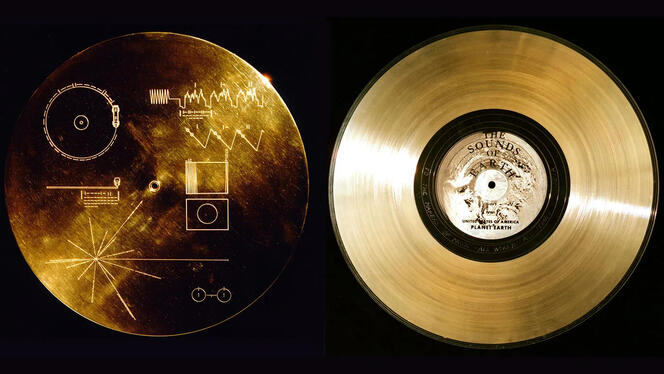
[ad_1]
The “Lunar Shelter” project was launched nearly a decade ago and aims to send a batch of optical discs containing a large amount of knowledge and material evidence of human civilization to the moon.
In the face of increasingly rapid climate change and other threats of our own making, the collapse of human civilization is becoming an increasingly plausible scenario. Against this backdrop, how can we ensure that some of humanity’s cultural and scientific heritage is preserved in the event of a possible collapse of modern society in the future? To answer this question, refuge The project aims to send a time capsule to the moon containing a series of discs that bear witness to our human knowledge and achievements. “Our project can be likened to a kind of triptych, attempting to encompass who we are through our genome; what we know in the form of a wealth of scientific knowledge; and what we create through art.” explains Benoît Faiveley, project coordinator.

The Sanctuary team views part of the “Life” disc on the WILDER video wall at INRIA (Paris-Saclay). This is a very high-resolution multi-touch screen equipped with a motion tracking system that enables the team to verify the entire content of the disc.
To put these ideas into practice, the French engineer recruited researchers from several scientific fields, including astrophysics, paleontology, particle physics and computer science, as well as artists and designers. With the support of the French National Institute of Scientific Research and technical support from the French Alternative Energies and Atomic Energy Commission (CEA), the ten-member team first set out to design a medium that could hold all this information. After much discussion, they decided to use an artificial sapphire disk with a diameter of 10 cm and a thickness of 1 mm. “This material is almost as hard as diamond and could withstand the extreme temperatures on the lunar surface for millions of years without changing at all.” Faiveley explained.
The New Rosetta Stone
To record the data on each disc, the consortium chose a form of analog coding based on micropixels, inscribed directly into the material using lasers. This was a deliberate choice, explains Jean-Philippe Uzan, a cosmologist at the IAP., People who have been involved in the Sanctuary project since the beginning: “The information on the disc is intended for our distant descendants, whose reading tools may be very different from those used in today’s digital technology. At least assuming that these descendants, whether human or not, will continue to have sight, we decided to represent most of the data in the form of images and infographics produced by micro-engraving so that they can be seen with the naked eye or a simple magnifying glass.” A sapphire disk can contain up to 7 billion of these pixels, each about 1 micron in size, meaning it can store text equivalent to 2,500 pages of A4 paper.

Benoît Faiveley, founder of the Sanctuary project, examines the first discs engraved at CEA-Leti in Grenoble (south-east France).
At this stage of the project, nine of the discs are already 95% full. Five of them describe general concepts of mathematics and matter, the place of man in space and time, his relationship to the universe and other living things, and so on. In addition, there are illustrations of the human body in the form of anatomical diagrams, from the surface of the skin to the skeleton, including the vascular, nervous and muscular systems. Like the Rosetta Stone, these discs also contain keys to help future Champollions decipher and understand them. “Based on the foundations of mathematical language, the fundamental components of matter and the assumption that the universal laws that govern them remain unchanged, Rosetta Stone 2.0 defines all physical quantities used in our infographics, specifically the international units of measurement, including the meter, kilogram, and second,” Uzan explained.
NASA support made the project possible
The combination of Sanctuary’s scientific rigor and the beauty of its visual design convinced NASA to support the project. In September 2023, the agency confirmed that the 1.4 kg time capsule, consisting of a high-strength, lightweight aluminum container containing 24 sapphire discs, will travel to the Moon aboard the future Artemis CLPS lunar mission, scheduled to launch in 2027.
With this prestigious partnership, Sanctuary follows in the footsteps of the gold record In the late 1970s, two Voyager spacecraft set out to explore the outer solar system, but the project led by Faiveley is different because it includes information about the genomics revolution, a major scientific breakthrough that occurred at the turn of the millennium. The four discs in the time capsule will contain the complete genetic code of a man and a woman.

This golden record, produced in 1977 and sent aboard the Voyagers 1 and 2, contains both sound and images. Instructions for use and the location of the solar system are printed on the left side of the record cover for hypothetical aliens.
The reserve team also wanted to showcase the diversity and abundance of life on Earth. This task was entrusted to CR2P paleontologist Jean-Sébastien Steyer. “Using a visual representation of the tree of life created in collaboration with Canadian artists, our goal is to provide a modern view of evolution and make it easier for people to understand the relationships between living species and fossils.” The researchers explained. “Using an approach somewhere between a comic and a mind map, we try to provide a picture of the fossilization process and various hypotheses about the origin of life.”
Culture and Natural Sciences
The Sanctuary project has not neglected pop culture either. For example, pixelated creatures from the famous video game Space Invaders are incorporated into the tree of life to illustrate the species richness of groups such as arthropods. “Beyond its mission as a time capsule, the shelter hopes to reignite public interest in the natural sciences through the exhibition, presenting the disc’s rich contents in an approachable and sometimes alternative way.” Styer added.
In addition, as a result of the collaboration with UNESCO, at least four discs are expected to be awarded World Heritage of Humanity, showcasing a range of prestigious natural and cultural sites. While the final selection is bound to be hotly debated among the members of the alliance, Faiveley has a soft spot for Burgundy vineyards. “I’m from the town of Nuits-Saint-Georges, so it would be a wonderful symbol for me to see these typical vineyards included in the Sanctuary.” This choice seems even more reasonable given that the town’s name has represented one of the craters that was the landing site of the Apollo 15 mission since 1971. ♦
[ad_2]
Source link


